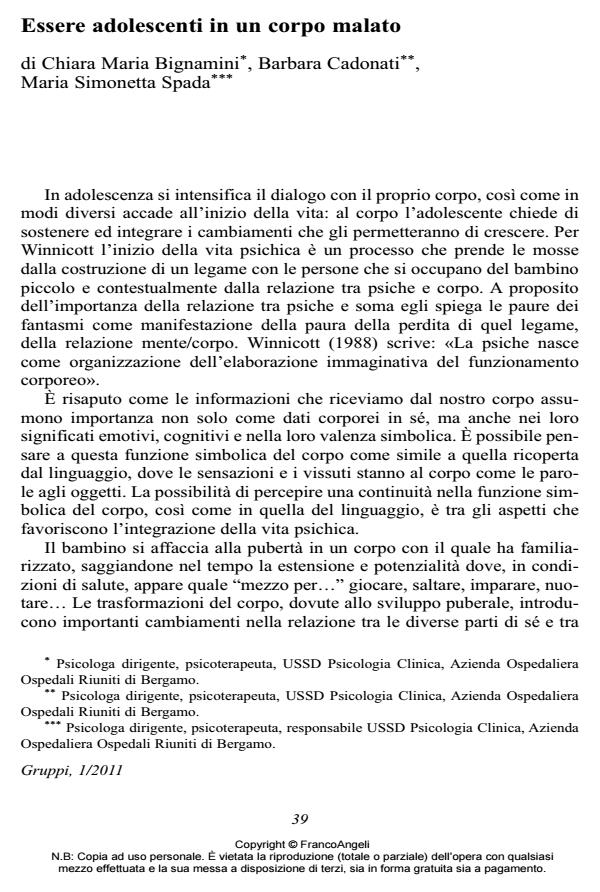Essere adolescenti in un corpo malato
Journal title GRUPPI
Author/s Chiara Maria Bignamini, Barbara Cadonati, Maria Simonetta Spada
Publishing Year 2012 Issue 2011/1
Language Italian Pages 6 P. 39-44 File size 161 KB
DOI 10.3280/GRU2011-001004
DOI is like a bar code for intellectual property: to have more infomation
click here
Below, you can see the article first page
If you want to buy this article in PDF format, you can do it, following the instructions to buy download credits

FrancoAngeli is member of Publishers International Linking Association, Inc (PILA), a not-for-profit association which run the CrossRef service enabling links to and from online scholarly content.
Unlike children, who, essentially, see their bodies as tools that can be used to make or feel something, perceiving them as familiar and safe containers, teenagers look at their bodies and require them to play a structuring and integrating function that can support their transforming identity. Illness is often seen as an attack against the body, but in adolescence it risks becoming, above all, a threat to this symbolic function and to the future. More or less consciously, in these situations teenagers often trigger certain self-defence strategies and expedients. Unfortunately, these defences do not always reach the objective they were triggered for and become self-destructive acts or processes of which the teenager is only partially aware. In the article the authors explain some of these critical issues, on the basis of their experience with adolescents who were admitted to the hospital because of chronic or acute diseases, and who often needed a lengthy hospitalization or several surgeries. Finally, the authors suggest some considerations on the importance of a therapeutic function that could preserve the continuity of the growth process and that could reduce the risk of flattening the inner world on disease.
Keywords: Adolescence, body, illness, identity, protection, hospital psychology
Chiara Maria Bignamini, Barbara Cadonati, Maria Simonetta Spada, Essere adolescenti in un corpo malato in "GRUPPI" 1/2011, pp 39-44, DOI: 10.3280/GRU2011-001004